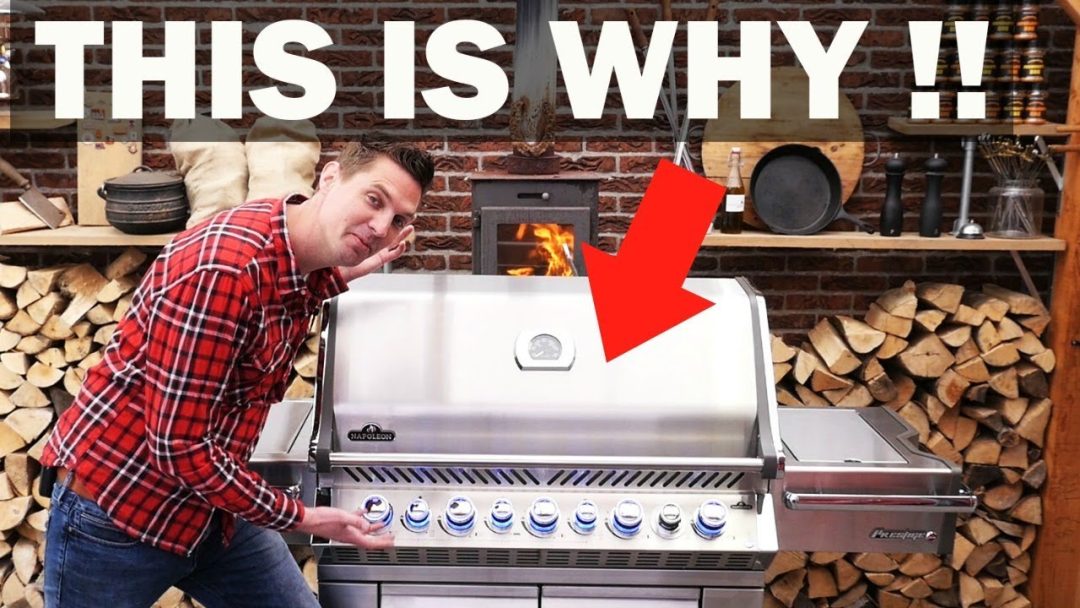Now that you have decided on a Gas BBQ as your preferred grill because you prefer the simplicity of use and convenience of fast and clean cooking, you will want to know what else you should be looking for when choosing a Gas BBQ grill.
Right from the outset, you should know that gas BBQs are most commonly sold with propane gas fitments, meaning that you will need to buy propane cylinders to use them. Natural gas conversions are available, but more on that later.
The fundamentals of a gas BBQ are quite straightforward: There will be burners to radiate the heat and just above them you should find a system to diffuse it via flavorizer bars, ceramic briquettes, or lava rocks, etc.
Above the heat diffusion system, you will see the cooking grates (also called griddles), to place and cook your food on.
Some gas BBQs come with hot plates as well, to cook things such as vegetables, eggs, sausages and so on, which make it great for making a quick al-fresco meal.
Construction
Better Gas BBQ’s usually incorporate two or more individual burners (not just controls) that provide greater control of temperature. Most lower-priced Gas BBQ grills have a single burner designed like an H or a bar, some with one control, some have two controls. Gas BBQs with a single burner doesn’t allow you to control heat as well as grills with several burners and this could result in varied temperature spots on the cooking area.
Assembly
When choosing a charcoal BBQ grill, you should be looking at ease of assembly. See if you can take a look at the instruction manual that comes with the particular charcoal BBQ that you are interested in, and see what work and tools are involved to complete building the BBQ.
See if the BBQ requires special tools to complete the build and also check that the supplied fittings are complete and in good order before starting the construction of the charcoal BBQ grill.
Using a Gas Grill
When cooking on a gas grill, fluids from the meat or vegetables go down and accumulate near the heat source until they reach a flash point and burn off.
The better gas grills quickly flash off the fats, and this virtually removes any flare-ups and in turn, allows it to provide a distinct flavorful smoke that will improve the flavor of the food.
Many Gas BBQ manufacturers depend on lava rock or ceramic rocks to radiate the heat from the heat source to the cooking area. Fluids from the meat or vegetables usually pool in these grills causing unwanted flame-ups. The best gas BBQ grills utilize a steel bar system (pioneered by Weber) that transports the fats away from the burner flames and this again reduces spitting or flame outs.
BTUs (A word on Thermal Units)
BTUs are not to be considered a description of overall cooking power. BTU’s simply show the quantity of gas a BBQ can burn. Tightly engineered grills use fewer BTUs and cook meat more efficiently. Too many BTUs can cause damage to burners and reduce the life of the grill, so in this case, you should rate the BTU output against the quality of construction to make sure that a grill with particularly high output is actually capable of delivering it without damaging the grill through long term use.
In general, large gas BBQ grills with large cooking areas need higher BTUs to radiate the heat properly, reducing any cold spots.
Maintenance
You will also need to look at the manufacturer’s enclosed warranty, and see if there are dealers who are local to you who are capable of supplying replacement parts easily and inexpensively should a part of your charcoal BBQ become damaged. Some manufacturers have a website that offers parts delivered to your door via their online store, so check to see that the parts for your charcoal grill are readily available.
Safety
Make sure that the gas BBQ closes properly on all sides. Sometimes panel fit on the lid is not what it should be and you may notice a tiny gap between the gas BBQ hood and the cooking place when it is shut. If this is the case, then give it a wide berth and look at another.
This is usually down to either a small manufacturing defect or possible damage during transportation, but it will almost certainly impair the way the gas grill operates and increase the likelihood of an injury through flames or hot fat escaping through any gaps on the gas BBQ.
It should go without saying that for safety reasons and the type of gas grill you are using, you should have a pail of water, an extinguisher, quality BBQ utensils, and heat-resistant mitts to hand at all times.
